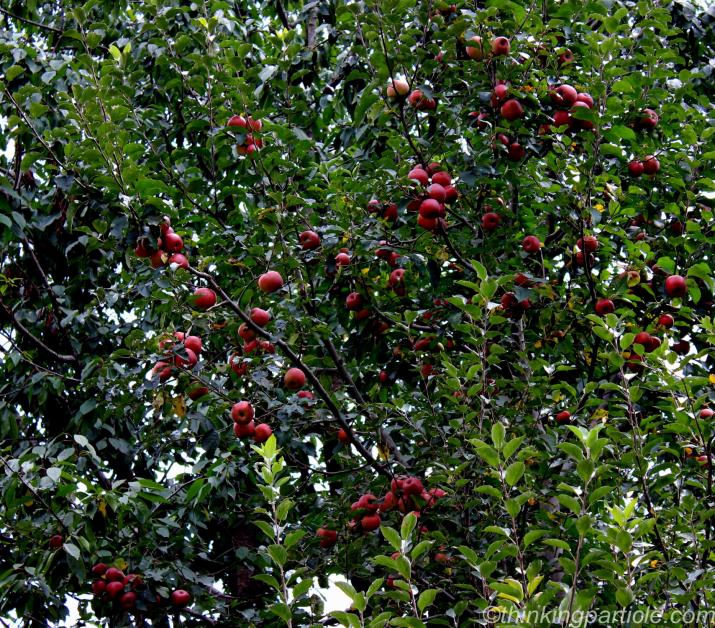Orchard Tourism in Himachal Pradesh
Fruit cultivation has changed livelihood pattern in Himachal Pradesh and as newer cash crops change lifestyles so do they attract a new breed of tourists to undiscovered destinations, where life moves with the season and beckons the traveler to part take in nature’s bounty.
Off the beaten track, travelers go beyond scratching the surface of scenic valleys and desire to connect with the land and its people. The salubrious environs of Himachal with its lush green valley’s amidst snow capped mountains, lakes and rivers gushing out from deep of gorges, with a bounty of fruits and flowers around, temples and monasteries rich in cultural heritage make this Himalayan state an ideal destination.
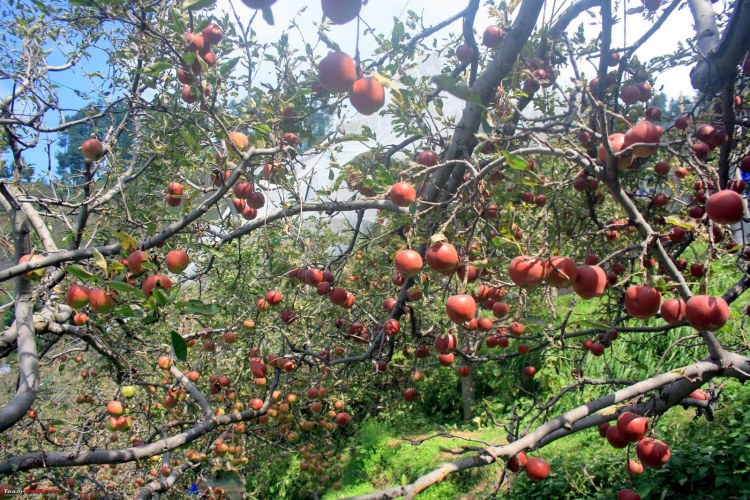
To escape the growing monotony of an expanding urban culture even in hill stations, orchard tourism is like a breath of fresh air where one gets to savor the land, its people and fruits that enrich their lives.
Varying altitudes create unique micro-climates in most valleys where tropical fruit laden trees in lower altitudes gradually give way to temperate fruits as one moves higher in the hills. The riot of spring breaks out in February at lower altitudes, advances into March-April in the mid hills and touches the higher reaches of Lahaul-Spipti and Kinnaur in May-Jun. the hills slowly come alive to the richness of green meadows, melody of chirping birds and the miracle of unfolding buds and blossoming trees.
And the blossoms are a plenty: an almond blossom; a plum blossom; an apricot blossom; a peach blossom; a cherry blossom; an apple blossom; all are magical moments for anyone living or holidaying on an orchard.
The river valleys of Beas and Satluj have abundance of almond and plum plantations, higher hills of Shimla, Kullu, Mandi, Chamba, Kinnaur, Bharmaur and parts of Lahaul and Spiti is apple country. Alongside apple are pockets of cherry, apricot and peach plantations. Orchards of Sirmaur and richly laden with peaches, pears and at place apple is also grown. Not just these, mangoes and citrus fruits, especially oranges and kinnow plantations are fast expanding in Kangra, Hamirpur, lower parts of Chamba and Sirmaur regions, Kinnaur, Chamba, Kullu and Shimla also produce walnuts while in Kinnaur, Chilgoza (edible pine seeds) is a crop harvested from the forests.
Sirmaur:
Fossil remains of pre-historic animals like giant mammoths and large tigers have been discovered in the Shivalik foothills. A fossil park at Nahan records the pre-history of the region.
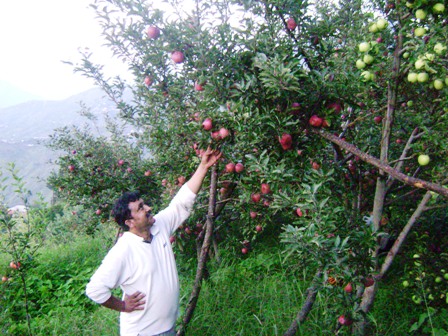
Besides the pilgrimiage and tourist centres of Paonta Sahib and Renuka, an excursion into the orchard country or Rajgarh, the strawberry fields in Nahan and Paonta, amidst mango and kinnow orchards around Bir Bikramabad lay bare glimpses of rural Himachal Pradesh.
Habban valley, Haripurdhar and Rajgarh have some of the most beautiful hideaways that are yet to be explored. Plums, peaches, apricots, pears as well as apples are grown in and around Rajgarh. Spring that breaks out in February-March may hold attraction for most visitors but fruit laden trees between June-July have a charm of their own.
Along the Chur Chandni range, the highest in the Shivalik mountain chain, are Nohradhar-Haripurdhar. The wide views of the Indo-Gangetic plains panning out from here are awesome.
- Hidden Treats: Rajgarh, Habban Valley, Bir Bikramabad, Nohradhar Haripurdhar.
- Popular Destinations: Nahan, Renuka, Paonta Sahib.
- Best time to visit: Sirmaur countryside is good to explore around the year.
- Accommodation: Himachal Tourism Hotels in Paonta Sahib, Renuka; Government PWD/Forest rest houses at Sarahan, Rajgarh, Pachhad, Nahan, Bir Bikramabad, Paonta Sahib, Ghanduri, Choraf and Lutkari; Camping sites at Harpurdhar.
Solan:
The off-season vegetable producing hub of the state also has abundance of stone fruit orchards scattered along hillsides that grow delicious Santa Rosa plums and a variety of apricots. Some valleys do grow peaches and pears and in the higher hills around Chail apples to are grown. The region is also littered with commercial floriculture and mushroom farms.
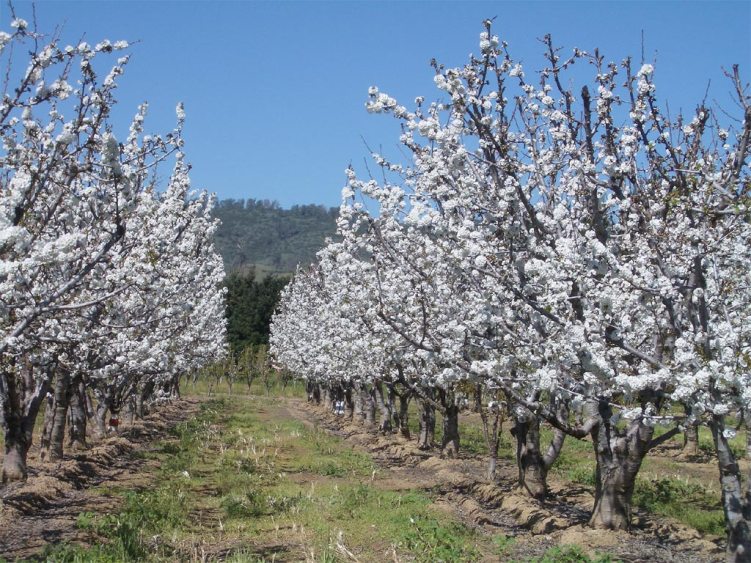
The Dr. Y S Parmar university of Horticulture and Forestry located at Nauni, close to Solan town, is the nucleus for conducting research and introducing many new fruit and other cash crops in the state.
Amidst thick deodar forests Chail, originally built as a princely summer estate, boats of having the highest cricket stadium in the world. Nearby are orchards that grow sumptuous delicious apples.
On the road to Chail is Sadhu Pul. In this valley during summer one comes across acres of field lush with gladiola, carnations, marigolds and other flower crops. Much of this goes to meet the summer demand of flowers in Delhi and Chandigarh.
Mountain top townships of Daghshai and Kasauli are remnats of the cantonments that the British built. A legacy of that period lives iin the many kinds of trees including fruit bearing ones that the British rulers planted in the area. On a branching route is Arki. An old hill fort here has been converted into a heritage hotel. The wall paintings that adorn the palace within the fort are exquisite and exhibit of hill artists. The valley has abundance of stone fruit orchards.
Between May to July, the Kandaghat-Shimla stretch of the Kalka-Shimla highway turns into a roadside market where most motorists pick up many of the fruits on sale.
- Popular Destinations: Kasauli, Daghshai, Barog, Solan and Chail.
- Hidden Treats: Sadhu Pul, Nauni and Arki.
- Best time to visit: February to November
- Accommodation: Himachal Tourism hotel at Barog, Kasauli and Chail. There are many private hotels along the Kalka-Shimla highway. Government PWD/forest rest houses at Arki and at other places.
Shimla:
Heartland of orchard tourism fruit cultivation took off in Shimla hills with the advent of British administrators establishing permanent residencies around Shimla and Kotgath in the early part of the 19th century.
Contiguous with the Solan belt, the hills in this regions offer country tourism from valley to mountain top destinations.
The highway beyond Shimla connects up with the Indo-Tibetan border posts of Kinnaur and Spiti. From Theo, an hour’s drive from Shimla, a branching road heads into the orchard country of Kotkhai, Jubbal, Hatkoti and along the Pabbar river into Rohru, Chirgaon and onto Chansal heights. Beyond lies the pristine landlocked mountain habitation of Dodra Kawar.
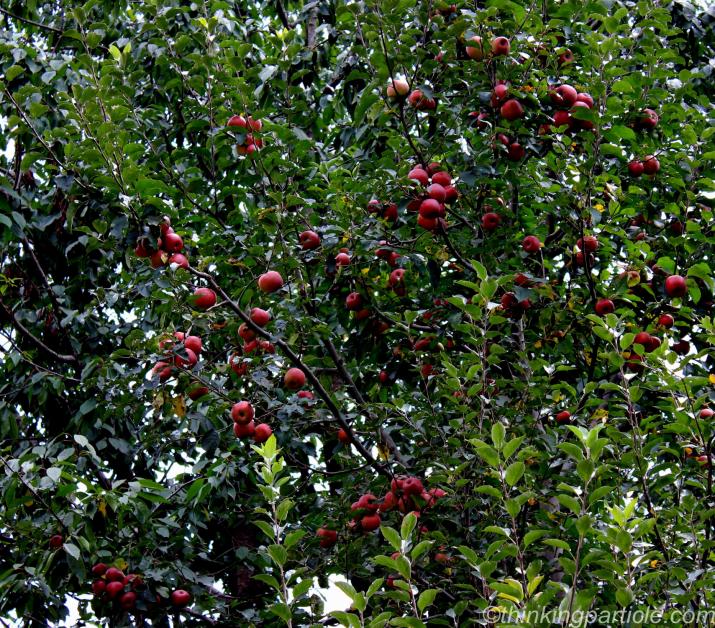
Higher up in the hills are acres and acres of apple orchard lands and the lower valleys abound in almond, plum, peach and pear plantations.
Kotkhai, once a princely estate, was one of the first directly administered hill areas by the expanding British Empire in the early 19the century. Jubbal, maintained its autonomous status as a princely estate till independence. The Jubbal royal palace freezes that age in stone and wood.
Further ahead on the road besides the gently flowing Pabbar River is Hatkoti, deeply revered for its famous temple of Durnga. Rohru, a growing township, is a market centre for the orchard country around. Those heading on the highway to Kinnaur, beyond Theog encounter the ridge top popular destination of Narkanda. Other than the view of the snowcapped peaks across, the valley views from here only sow rolling hills covered with orchards and orchards. In winter the Narkanda slopes turn into skiing slopes.
The lower hill across in the shadow of the Hatu Peak is Kotgarh, cradle of the fruit revolution that has spread across the entire state, economically empowering impoverished hill folks. Fruit cultivation was introduced in Kotgarh by British missionaries in the first half of 19th century. Commercial growing of apples only succeeded at start of 20th century, after American missionary Samuel Evans Stokes adopted the Hindu faith and set about developing a cash crop by importing American varieties of delicious apples, a variety of temperate and tropical fruits like cherries, plums, apricots, kiwi fruit, nectarine, walnuts, peaches, pears, plums, citrus, mangoes, grapes and litchis can be seen growing in this valley.
- Popular Destinations: Fagu, Narkanda, Hatkoti, Rohru.
- Hidden Treats: Kothhai, Jubbal, Chirgaon, Kumarsaiin, Tani Jubbar, Thanedhar, Hatu Peak.
- Best time to visit: Throughout the year. Spring is from February to April and fruit harvest can be seen from July to October.
- Accommodation: Himachal tourism operates hotels at Fagu, Khara Pattar, Rohru, Rampur and Narkanda. Government PWD/Forest rest houses can be booked for staying at Kotkhai, Jubbal, Hatkoti, Thanedhar, Kumarsain and other places.
Kinnaur:
A land of breathtaking landscapes, Kinnaur produces one of the finest qualities of fruits in the world. The varied produces from this arid mountainous region includes apple, almonds, dried apricots (locally called ‘chulis’), grapes and raisins, ‘chilgoza’ and the local cognac ‘Angoori’, Kinnauri beans and Jeera (spice) are as much sought after as the woolen products which include gundmas (woolen blankets), pattis (pure wool cloth) and Kinnaur shawls. Gazing across the valley to catch a glimpse of the sun’s first rays hitting the peak of Kinner Kailash from Kalpa is a magical moment for any traveler on the route. Forests of edible pine (Chilgoza) and apple orchards abound the area. The excitement of discovering hidden valley destination populated with simple warm hearted people make lasting impressions.

Kalpa, at 9200 feet above sea level offers a view of the peaks around that one will not forget in a long while. Fruit laden orchards make the idyllic destination a quiet getaway for a leisure holiday. Lower in the hill is Reckong Peo, the district headquarter of Kinnaur. Other places of interest in Kinnaur are Nichar, the Sangla valley, Kamru, Chitkul, Pwari, Ribba, Moorang, Pooh, Nako, Changho and Leo.
Enclosed between two mighty ranges Sangla, is one of the most picturesque glaciated valleys of Kinnaur. The river flowing by is rich in trout fish. Ribba, on the highway to Sumdho has rich chilgoza forest and the vineyards here produce grapes that are sourced to make one of the finest Kinnauri cognacs (‘Angoori’). Apples from Pooh, Changho and Leo are in great demand among exporters. Nako (2950m) with its pristine lake in higher Kinnaur has great views to soak in.
For more information about Himachal tours visit: NamasteIndiaTrip
